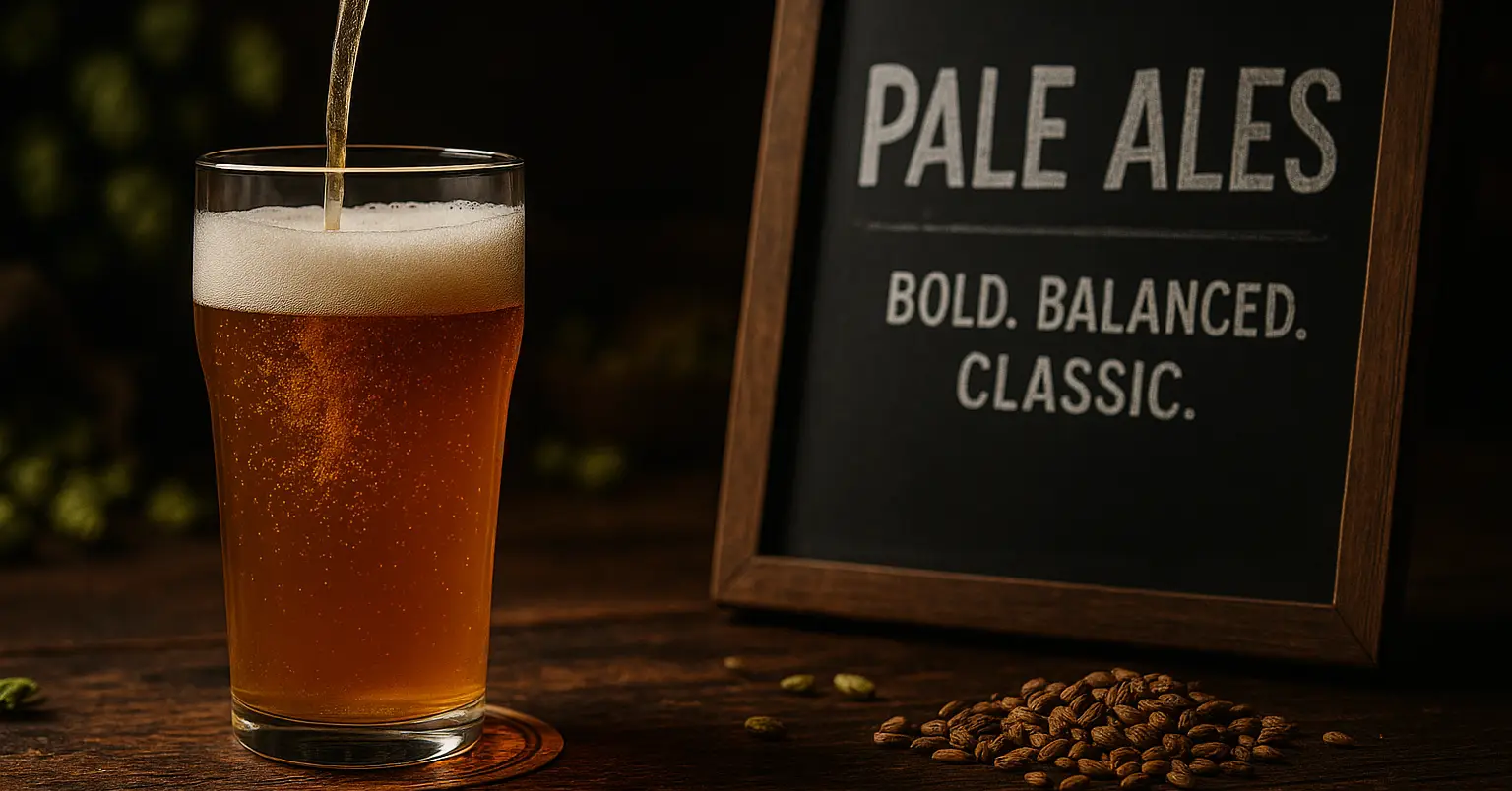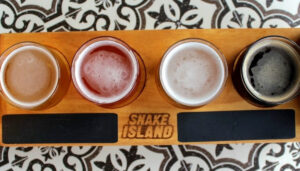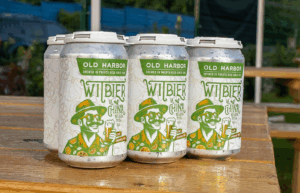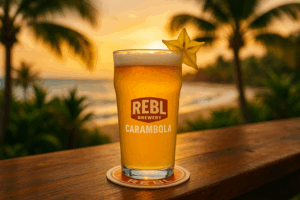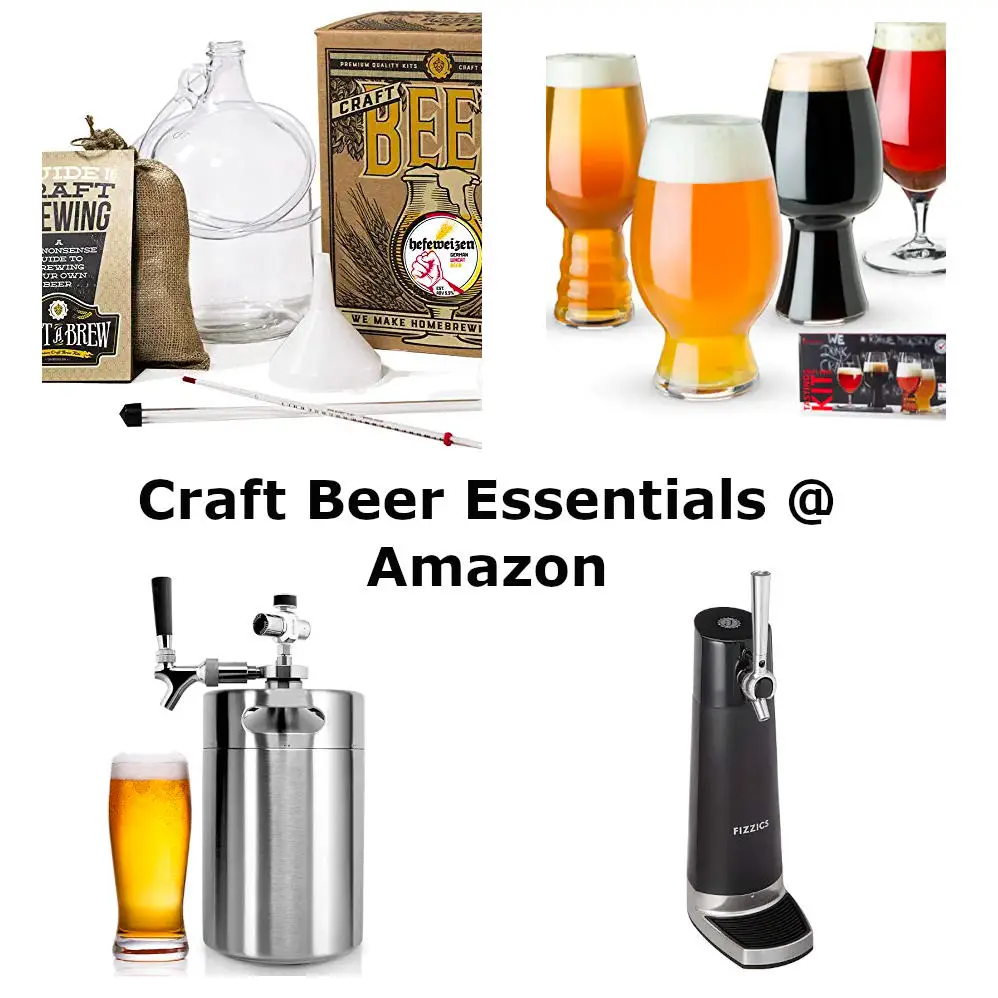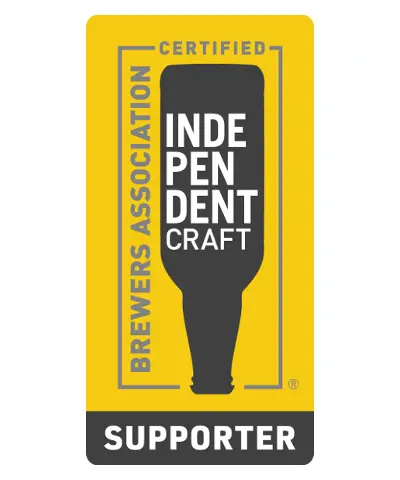Bright, balanced, and endlessly drinkable. The Pale Ale Style still remains a cornerstone of the craft beer movement.
Whether you’re a seasoned hophead or just dipping your toes into craft beer, pale ales are an essential stop on your flavor journey. They’re easy to love. And easier to pair. So, let’s break it down.

What Is a Pale Ale?
At its core, a pale ale is a hop-forward beer style known for its golden to amber color, medium body, and crisp bitterness. Born from British brewing traditions, this style bridges the gap between malt and hops, offering a refreshing, flavorful experience without overwhelming the palate.
It’s approachable yet complex. Classic but evolving.
The History of Pale Ales
The style dates back to 18th-century England, when advancements in malt kilning created lighter-colored malts. These “pale malts” led to a beer that was lighter in color than traditional dark porters and stouts. By the 1800s, the English Pale Ale, or “bitter,” was widely popular in pubs across the UK.
Then came the American craft beer revolution. In the 1980s, pioneers like Sierra Nevada took the style and added a bold twist; American hops. The result? A modern classic with a citrusy punch.
Pale Ale Characteristics
Here’s what defines a Pale Ale:
- Color: Pale gold to deep amber
- ABV: Typically 4.5% to 6%
- Bitterness: Medium (30–50 IBU)
- Body: Medium-bodied
- Malt profile: Light caramel, biscuit, toasty
- Hop profile: Citrusy, floral, piney, herbal, depending on the origin
Balanced. Layered. Sessionable.

Typical Hops Used in Pale Ales
Hops are the heart of a pale ale. While the exact varieties vary by region, these are some go-to favorites:
🇺🇸 American Pale Ales:
- Cascade – citrus and grapefruit with floral notes
- Centennial – similar to Cascade, but punchier
- Chinook – spicy, piney, and slightly smoky
- Citra – tropical fruit, mango, and lime
🇬🇧 English Pale Ales:
- East Kent Goldings – smooth and earthy with sweet floral aromas
- Fuggles – woody and herbal
- Target – strong bitterness with a spicy backbone
Each hop adds its own flair, but they all aim for balance—not overwhelming bitterness.
Popular Pale Ales You Need to Try
Let’s raise a glass to some of the world’s most beloved pale ales. These bottles (and cans) helped define and evolve the style:
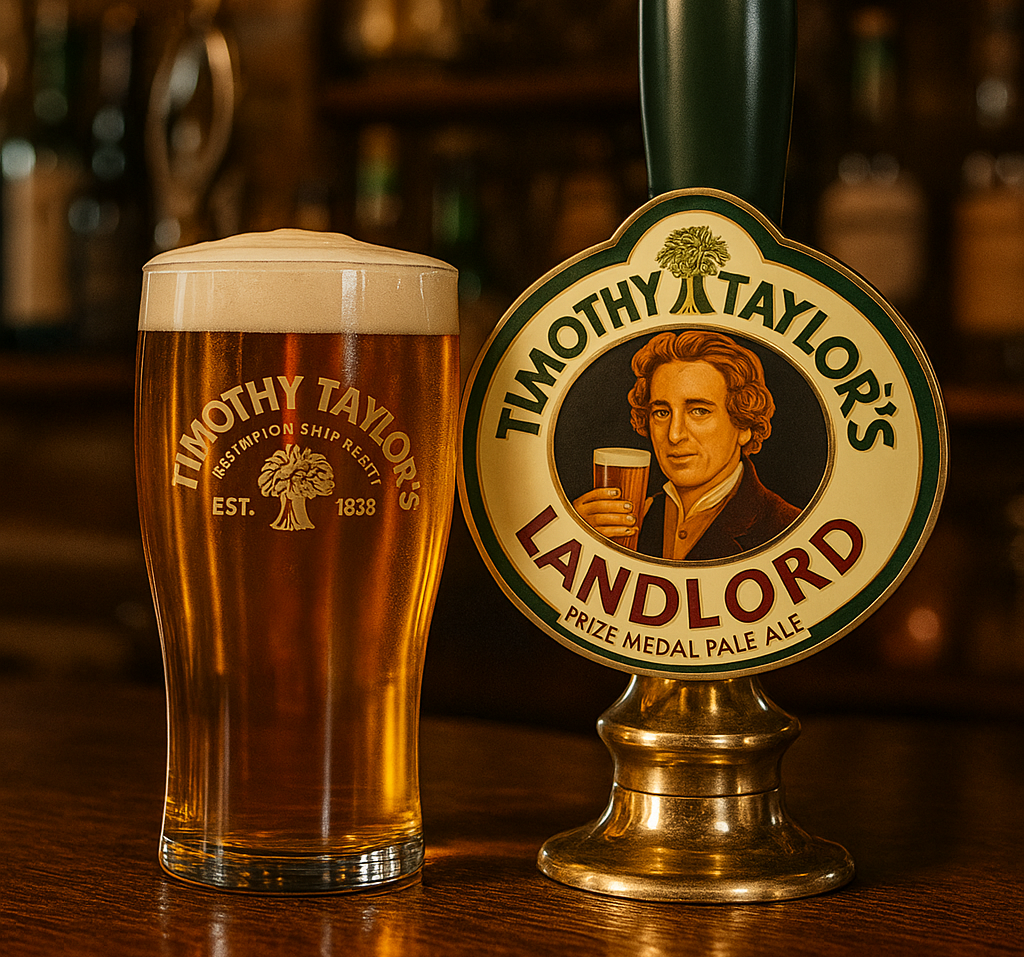
🍺 Sierra Nevada Pale Ale (California, USA)
The OG of American Pale Ales. This trailblazer features Cascade hops for a crisp pine-and-citrus hit. Balanced malt backbone. 5.6% ABV. Still a fridge staple for hop lovers.
🍺 Dale’s Pale Ale by Oskar Blues (Colorado, USA)
Bold, hoppy, and slightly stronger than your average pale. This one toes the line between pale ale and IPA. Canned craft at its best. 6.5% ABV.
🍺 Timothy Taylor’s Landlord (Yorkshire, UK)
Classic English pale ale. Light, dry, and biscuity with earthy hop bitterness. A benchmark in traditional British brewing. 4.3% ABV.
🍺 3 Floyds Alpha King (Indiana, USA)
An aggressive American Pale Ale bursting with citrus, pine, and caramel malt. Bold but balanced. 6.66% ABV; a devilishly drinkable brew.
🍺 Stone & Wood Pacific Ale (Byron Bay, Australia)
A new-world pale ale brewed with Galaxy hops. Bursting with passionfruit, peach, and citrus. A hazy, summer-ready refresher. 4.4% ABV.
🍺 Confidential Pale Ale (Lúpulos Hermanos, Puerto Rico)
Brewed with a base blend of Pilsner and Maris Otter Malts
🍺 Ocean Pale Ale (Ocean Lab Brewing Co. Puerto Rico)
A beer with fresh tropical and citrus aromas and well balanced bitterness
🍺 El Sato Pale Ale (Boqueron Brewing Co. Puerto Rico)
Pours golden color with slight haze and 1 finger white head. The aroma is slightly sweet citrus with a touch of pine. Taste is the same with a well balanced bitterness
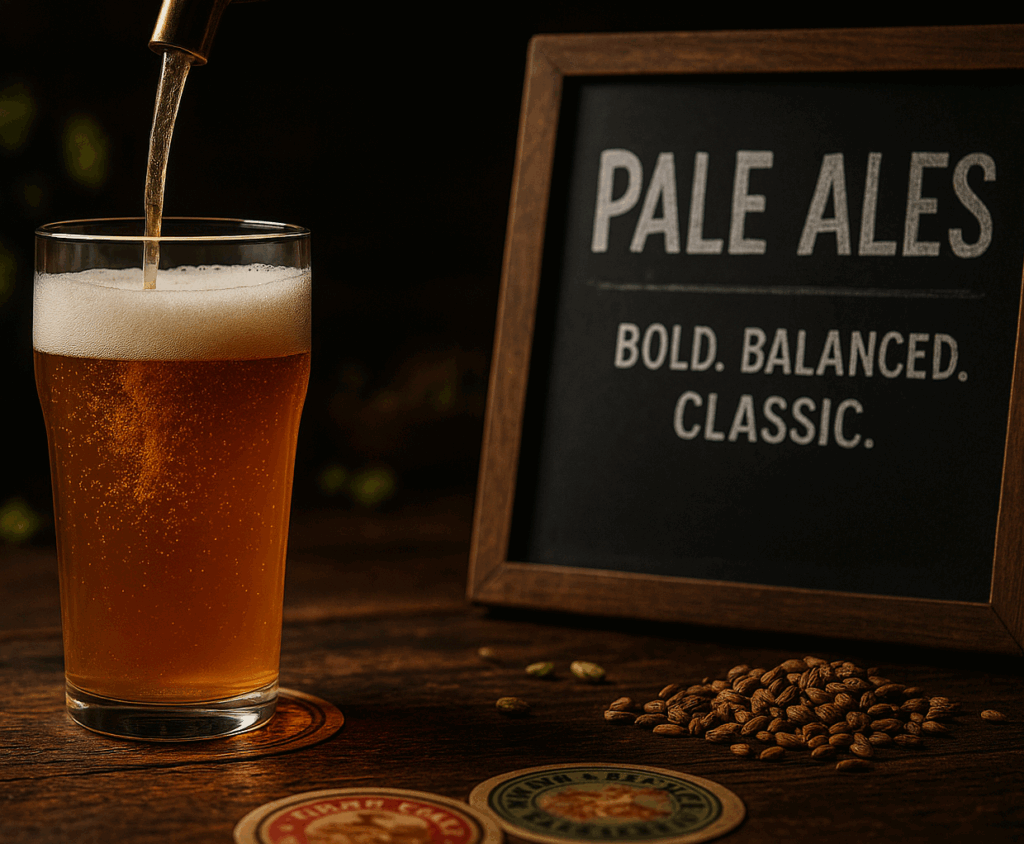
Why Pale Ales Still Matter
Pale ales might not be the flashiest style in the cooler these days, but they remain a core part of craft beer culture. Their drinkability, versatility, and historical significance make them a perfect introduction, and a reliable go to for beer drinkers everywhere.
Whether it’s a hop-forward American version or a smooth British bitter, there’s a pale ale for every mood, meal, and moment.
Final Sip
Pale Ales are timeless, versatile, and flavor-packed. They showcase hops without overwhelming bitterness. They balance malt without being sweet. And they pair beautifully with everything from burgers and BBQ to spicy tacos and fried chicken.
Looking to explore more hop-forward styles? Try comparing a Pale Ale vs IPA; you’ll appreciate the nuance even more.
Photos, AI, PRBG

